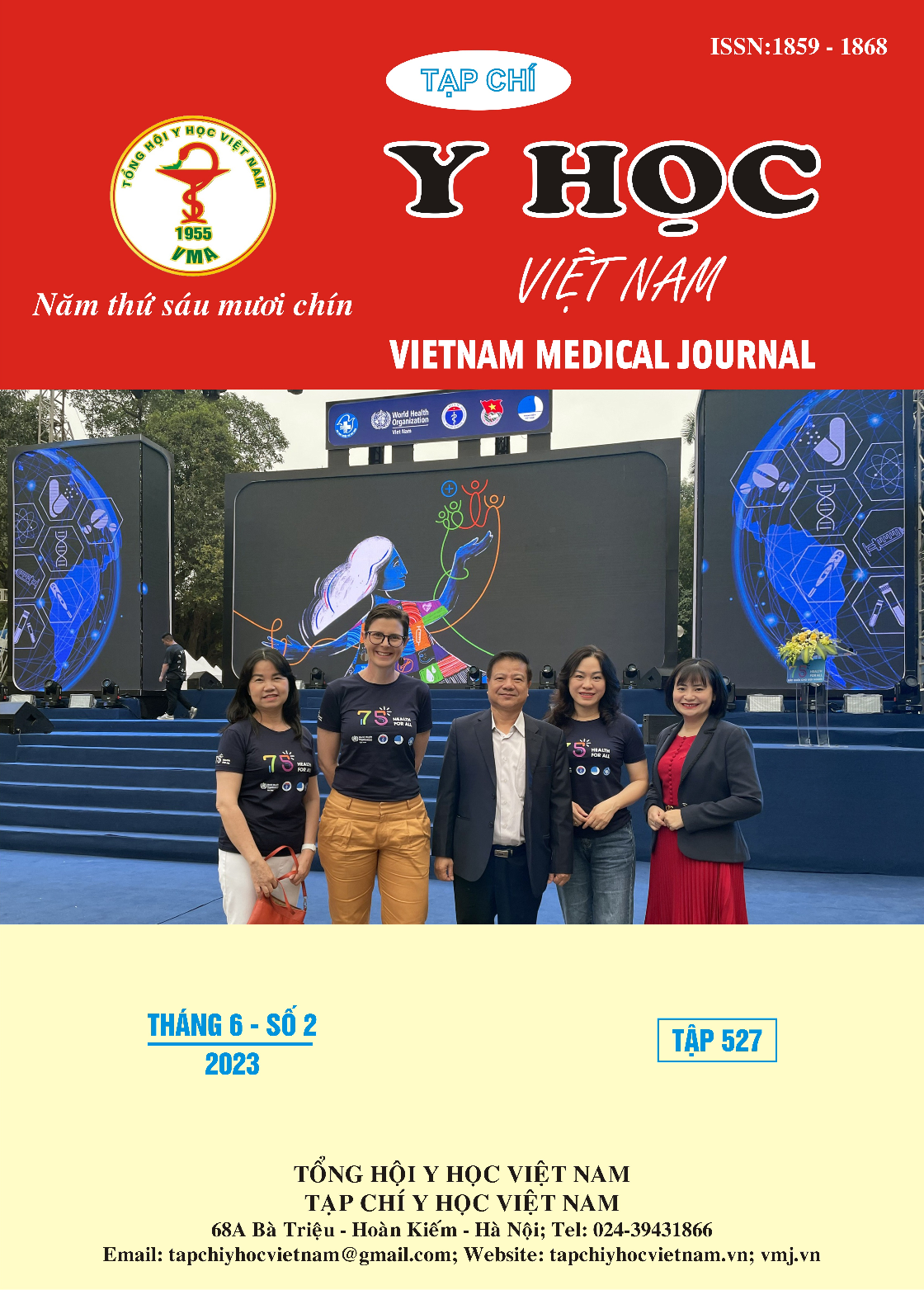EVALUATION OF ANISOMETROPIA IN STUDENTS ATTENDING EYE EXAMINATION AT NGHE AN EYE HOSPITAL
Main Article Content
Abstract
Objectives: Evaluation of anisometropia in students. Subjects and methods: Prospective corelation study, 100 patients with refractive errors in school age from 6-17 years old , examination with anisometropia at Nghe An Eye Hospital from March 2022 to August 2022. Results: There are 79% of patients with anisometropia below 1D; Twenty-one patients (21%) had anisometropia over 1 D. In which anisometropia (1-3D) accounted for 18% and anisometropia multiple (≥3D) accounted for 3%. The rate of anisometropia in patients with 2 eyes with the same refractive error accounted for the highest rate (42.86%). The rate of anisometropia in children with 1 correct vision in the total number of children with refractive error is 42.56%. The rate of myopia (41.93%) is much higher than the rate of hyperopia (19.35%) and the rate of emmetropia (4.83%). There are 11.5% of eyes with good vision from 20/30 and the majority of eyes with visual acuity <20/40 accounted for 70%. The difference in the proportions of the patient's visual acuity levels was statistically significant (P<0.05). There was no difference in the incidence of anisometropia in patients between men, women and age groups.
Article Details
Keywords
Anisometropia, refractive errors, amblyopia.
References
2. Tong L., Chan Y.-H., Gazzard G., et al. (2006). Longitudinal study of anisometropia in Singaporean school children. Invest Ophthalmol Vis Sci, 47(8), 3247–3252.
3. Deng L. and Gwiazda J.E. (2012). Anisometropia in Children from Infancy to 15 Years. Invest Ophthalmol Vis Sci, 53(7), 3782–3787.
4. Afsari S., Rose K.A., Gole G.A., et al. (2013). Prevalence of anisometropia and its association with refractive error and amblyopia in preschool children. Br J Ophthalmol, 97(9), 1095–1099.
5. Themes U.F.O. (2016). Theory and Practice of Spectacle Correction of Aniseikonia. Ento Key, , accessed: 02/16/2022.
6. Somer D., Budak K., Demirci S., et al. (2002). Against-the-rule (ATR) astigmatism as a predicting factor for the outcome of amblyopia treatment. Am J Ophthalmol, 133(6), 741–745.
7. Toma ç S. and Birdal E. (2001). Effects of Anisometropia on Binocularity. Journal of Pediatric Ophthalmology & Strabismus, 38(1), 27–33.
8. Nguyễn Thanh Vân (2012), Nghiên cứu đặc điểm lâm sàng và kết quả điều trị nhược thị do tật khúc xạ ở trẻ em, Luận án tiến sỹ y học, Trường Đại học Y Hà Nội.


